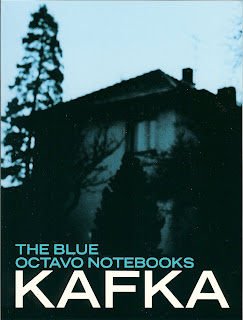

Summary
Years 2010 - 2011
We both applied for Italian citizenship through jure sanguinis. We're close, but not quite there. Last month, we sent in a few missing pieces of information. At this time, our applications are being processed. That’s all we know.
Years 2021 and beyond
See the updates for how our story played out and recent changes, especially and unfortunately the 2025 new laws severely restricting paths to citizenship.
You can consider this post as an example of how it use to be before 2025.
Overview
Our initial appointments to review our applications and associated paperwork for Italian citizenship took place two months ago. We had each requested our consulate appointments via email. Submitted within minutes of another, the earliest dates they had available were over a year and a half later and exactly a week apart. Does the consulate process only one application per week? Not all consulates have the same lead time or appointment scheduling. Here’s a list of Italian consulates in the U.S. You must work with the one that serves the area you live in. We opted for “mail-in review” since we don’t live near the consulate office in San Francisco which serves the Northwest.
The idea of dual Italian citizenship came to us in 2007 as we were planning our sabbatical to Italy. Part of the sabbatical then became a quest to gather the necessary paperwork – and there is no shortage of that. For our 2007 trip we decided that Visas were the best strategy and so we got them for that trip.
If your family members live in the same consular jurisdiction as you, and are interested in citizenship, then seriously consider combining efforts and doing the citizenship interview together. For example, if your sister or brother wants to apply for citizenship, the only difference between your paperwork and theirs may be an additional birth certificate. Again, check with the consulate that serves your area.
Jure Sanguinis
Jure sanguinis - the Latin phrase meaning “continuity of blood” or “by the right of blood” - is the right of citizenship under Italian Nationality Law by virtue of one’s ancestry. As with many aspects of Italian and Italian-American life and culture, the rules surrounding Italian citizenship jure sanguinis are complex and, in some cases, counterintuitive. [source: article by Michael Votto]
Now back to the Jure Sanguinis form. To find it, go to the San Francisco Consulate web site; go to the part of the web site dealing with citizenship. There is a form called Jure Sanguinis. There are a number of ways to claim Jure Sanguinis. To illustrate by way of example, we’ll focus on what was relevant for us. For Travelmarx (both of us) option #5 applies which is:
Your paternal or maternal grandfather was born in the United States, your paternal or maternal great grandfather was born in Italy and was an Italian citizen at the time of your paternal or maternal grandfather’s birth, neither you nor your father/mother nor your grandfather/grandmother ever renounced your right to Italian citizenship.In each of our cases, our Italian bloodlines are most easily proven via our paternal great grandfathers (pictured above). So one reads down to the section applying to option 5 and finds this list of required documents:
- Your paternal/maternal GREAT GRANDFATHER’S BIRTH CERTIFICATE
- Your paternal/maternal GREAT GRANDMOTHER’S BIRTH CERTIFICATE
- Your paternal/maternal GREAT GRANDPARENTS’ MARRIAGE CERTIFICATE
- Your paternal/maternal GREAT GRANDFATHER’S CERTIFICATE OF NATURALIZATION
- Your paternal/maternal GRANDFATHER’S BIRTH CERTIFICATE
- Your paternal/maternal GRANDMOTHER’S BIRTH CERTIFICATE
- Your paternal/maternal GRANDPARENTS’ MARRIAGE CERTIFICATE
- Your father’s BIRTH CERTIFICATE
- Your mother’s BIRTH CERTIFICATE
- Your parents’ MARRIAGE CERTIFICATE
- Your BIRTH CERTIFICATE
- Your APPLICATION AND YOUR DECLARATION THAT YOU AND YOUR ASCENDANTS NEVER RENOUNCED ITALIAN CITIZENSHIP BEFORE ANY ITALIAN AUTHORITY (Attachments: 2A - 2B)
- DEATH CERTIFICATE/S RELATING TO THE ITALIAN BORN ASCENDANTS ONLY.
- ORIGINAL AND COPY OF YOUR DRIVER’S LICENSE
Naturalization
Either the original of your ancestor’s naturalization certificate or a certified copy of what the National Archives has on file concerning his acquiring US citizenship. They will not certify the certificate, but they will certify all the rest, including the oath, which is what we need. It will have a red ribbon on it. If you send the original, you will need to enclose a pre-paid self-addressed USPS envelope for the return of the document to you. We do not accept any other form of pre-paid mail.
So we both went to the National Archives site and ordered up red ribbon copies. One of our great grandfathers was naturalized in a federal court (in New York) so the National Archives had all the supporting documentation including his oath of allegiance. The other great grandfather was eventually naturalized in Riverside County Superior court (California) and so the National Archives red ribbon copies provided some supporting documentation (his first applications via federal courts which were denied). And Riverside County Superior court archives delivered the essential documents attesting to his naturalization there. Confusing? Kind of. You just have to go with the process and find out what works.
Be prepared
Resources
The United States government’s position on dual citizenship: they recognize it but don’t encourage it stating that:
The U.S. Government recognizes that dual nationality exists but does not encourage it as a matter of policy because of the problems it may cause. Claims of other countries on dual national U.S. citizens may conflict with U.S. law, and dual nationality may limit U.S. Government efforts to assist citizens abroad. The country where a dual national is located generally has a stronger claim to that person's allegiance. [U.S. Department of State Web site]Finally, a great resource for Italian info and citizenship is Expat Talk, and this guy has a nice and recent story about his successful dual citizenship quest.
A Word About Services That Claim to Assist You
Be careful! If you search for “Italian citizenship” on the Internet you’ll find lots of services offering to gather the documents for you and perhaps shepherd them through the process. We initially tried one and it was a waste of time and money. We recommend that you don’t use them. It’s better to manage the paperwork yourself. It may be challenging at times but can be made easier by getting support from the forums or folks that have already done it.
Update January 2011


Update 2021
Update 2022
Update 2025
The Tajani Decree (Decree-Law 36/2025) introduces significant changes to Italian citizenship laws, particularly affecting those seeking citizenship by descent (jure sanguinis). This change went into effect in March 2025. We'll try to write more about it, but if we were applying today, we would not have been able to get citizenship.
The most important parts are
- Stricter Eligibility: Citizenship by descent is now limited to two generations—meaning only children and grandchildren of Italian citizens born abroad qualify.
- Residency Requirement: If a child is born abroad, their Italian parent must have lived in Italy for two consecutive years before their birth and still held Italian citizenship at that time.
Reason for the change? According to the Ministero degli Affari Esteri e della Cooperazione Internazionale: a flood of applications that were overwhelming the system where applicants are more interested in the value of the passport rather than citizenship. This seems to be the case especially with Argentina and Brazil. Quoting from the link above: "For example, Argentina increased from approximately 20,000 recognitions in 2023 to 30,000 the following year. Brazil rose from over 14,000 recognitions in 2022 to 20,000 last year.".













